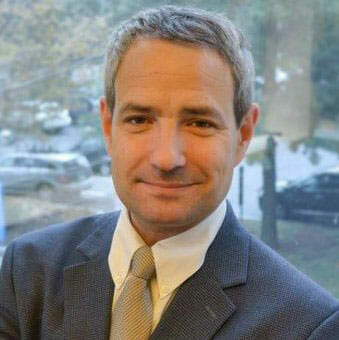
We need to reshape a 19th-century alumni office to meet the demands of a 21st-century audience.
“Alumni associations were rendered obsolete by Facebook and have since been dying a slow death.”
“Why get off my couch on a weeknight to connect with fellow alumni from college, one of a dozen institutions to which I have some faint sense of allegiance?
“Given the amount of virtual networking to be done, why connect IRL (in real life) at all?”
The answer to these loaded questions is the reason my job in alumni relations still exists. We still crave a live networking event, seminar, or raucous public debate. Alumni associations, for hundreds of years the conveners of such events, aren’t going anywhere.
But I don’t rest easy, nor should my peers in alumni associations the world round, even those of us at the most elite institutions of higher learning. To meet these demands, we must form “x-teams” – cross-functional teams from various verticals in an organization who share a common goal.
X-teams in advancement shops must be students of the marketplace, audience, and the whimsical trends among students, alumni, faculty, and the public. Taking a page from the best tech companies out there, I now look for colleagues who share an x-team mentality – for collaborating on tests that can nimbly sink or scale within a quarter’s time.
X-Teams Aren’t a Luxury
Live and virtual alumni event attendance at MIT, where I work, has been on a decade-long slide, while demands from alumni for memorable, compelling content has only risen. A competitive marketplace, in which event planning – curation, marketing, collaborating, AV, catering, surveying – is easier to master than ever, has upped the ante for serious nonprofits doing serious fundraising. X-teams are in many respects a do-or-die proposition in 2018.
An x-team usually takes two things for granted:
- Iterate and fail or scale.
- Avoid the pride of ownership at all costs.
To put it in musical terms, I tell my team (which averages an event every 3 days, year-round) that we must continue to play a bass line while improvising new harmonies on top of it.
Lessons Learned
Here are some lessons that emerged from this improvisational, x-team approach at MIT in the past year:
1. Crowdsource your pilots
Last spring, we sent 15,000 engaged alumni an email with the subject line “It’s pilot season.” In it, we included five pilot ideas for new kinds of events that we had dreamed up (a few with the help of volunteers), asking that they vote on which event we should pilot.
The tally helped put our hunches in perspective against our audience; there was a clear mandate not to have specific events spotlighting our lifetime-award recipients, for instance. We tested the winner, “Hack My Nonprofit,” two months later.
2. Broadcast 3x more than you produce yourself
Beginning last year, we asked every event producer on campus if alumni could tune in to their events remotely. Our team stalked forty institute-wide calendars for events that might appeal to alumni and asked about plans to livestream them. If the answer was “yes,” we created a simple registration page, basically a concierge service for delivery of the link on the day of the livestream, and invited alumni to “register” to receive it.
Campus partners worry that broadcasting an event will hurt live attendance. I respond that I have no data (yet) to support that. Major league sports surrendered on local blackouts years ago. I think it’s time we consider that too.
3. Find out where your alumni are hanging out, without you
I sometimes wonder if 100% of our alumni are engaged in some way with the college each year, but our measurement tools aren’t sensitive enough to recognize this yet. In the meantime, we’ve extended our typical detective techniques beyond Google Alerts, Tweetdeck, and even sophisticated/pricy tools like those Evertrue and Wealth Engine provide:
- We conduct weekly searches of Eventbrite for event descriptions using the words “from MIT” in our ten major markets.
- We conduct site searches for keywords connected to us on conference websites of conferences produced at the largest convention centers.
- And we match public lists of conference attendees against our database to find the largest possible gatherings of our alumni.
With this data, we make better informed decisions about where to sponsor alumni networking events, which corporate sponsors might be most optimized to reach out to for career events, and which departments might be most optimal to collaborate with to reach the greatest number of alumni.
4. Know what your faculty did last summer
To my knowledge, the Google Calendar that we created in 2015 of all faculty travel home and abroad for speaking engagements was the first attempt to corral our 5,000 researchers’ schedules into one place. Having wondered aloud to colleagues across campus for two years how we might all collectively do it, I made a stopgap calendar for my own educational purposes in the meantime. It stuck.
Now, each time we post that a faculty member is giving a TED talk in a regional market, keynoting a conference, or delivering a commencement address in her hometown, we ping him, telling them we’ve shared the event on our public calendar. Each month, in our events digest, we list the next 25 or so faculty talks in regional markets.
While we get no boost in our numbers from this practice, we learn so much by studying the clickers on these links. And we have fast become the one-stop shop for alumni (and many staff) to check on where their favorite faculty are traveling this month.
5. Shift your thinking: The world is your speakers’ bureau
Just as “friends” of a university have become vital to its philanthropic landscape, so too should alumni teams consider non-alumni in their search for speakers. A cursory look at our event attendance metrics from years past showed me that the occasional public intellectual or faculty member from a competing university drew alumni attendees to an event just as strongly as our own faculty or alumni speakers.
Armed with this insight, I’ve started to look beyond our 140,000 alumni and faculty speakers, and wherever I line up panels or events or whenever I market others’ panels or events to our alumni, I consider speakers without any affiliations to us whatsoever. If half of our job is to simply connect alumni to one another, we can accomplish as much regardless of who is on the stage.
6. “More is more.”
If you’re uncomfortable with the idea of quantity over quality, you might be in the wrong business. I’ve stopped trying to produce Davos and have grown far more comfortable with the term “meetup.”
Last year, our central campus calendar listed nearly 10,000 events – about 27 each day on campus. Our team produced far less than 1% of those, but we have 90 other markets to consider. In each of those markets, our alumni have the luxury of choosing the most niche of events appealing to their fanciest tastes that evening. Their hunger has not abated, but the buffet is more sumptuous than ever.
Will your alumni office bake one nice casserole for that buffet each month? Or can it produce a recruiting fair, startup competition, volunteer expo, seminar, debate, improv workshop, team trivia competition, book signing, and speed-mentoring event each week, year-round? Or (gasp) how about all of the above in one night, several times each year?
This spring, we’re trying all of the above on one day, at a re-launch of our women’s conference. Trying to be all things to all people – a dozen events in one with 100 speakers sharing one stage – is drawing a serious crowd, so much so that people are already wondering when we’ll do it again.
Exciting to hear? Yes. Exhausting too? Yes. The new normal? Maybe.
Conclusion
It’s time that we broke routine and became more improvisational, more nimble, in our approach. All of this becomes possible through the power of alumni cross-teams, pooling insights, ideas, and talent from across your organization. If you don’t already have such an x-team with an improvisational mindset, it is probably time to assemble one.


